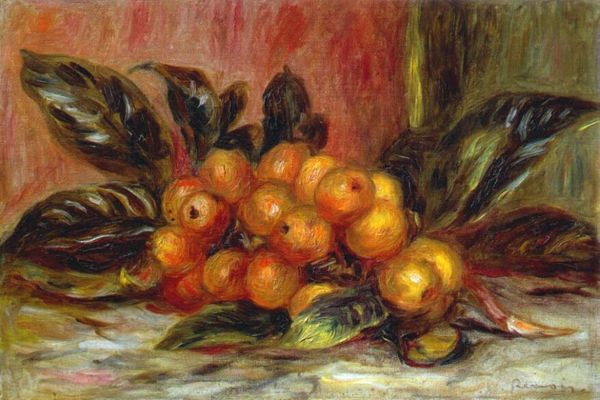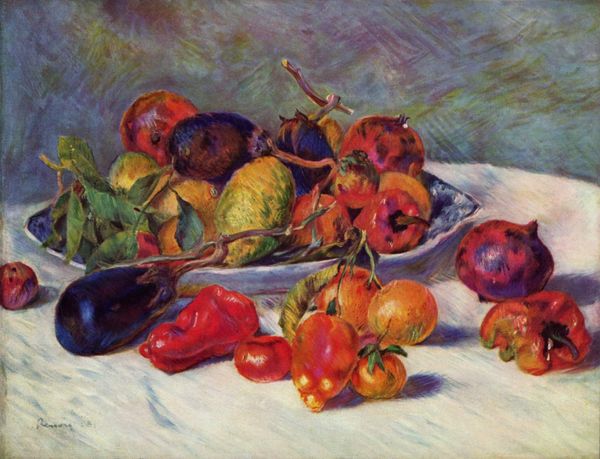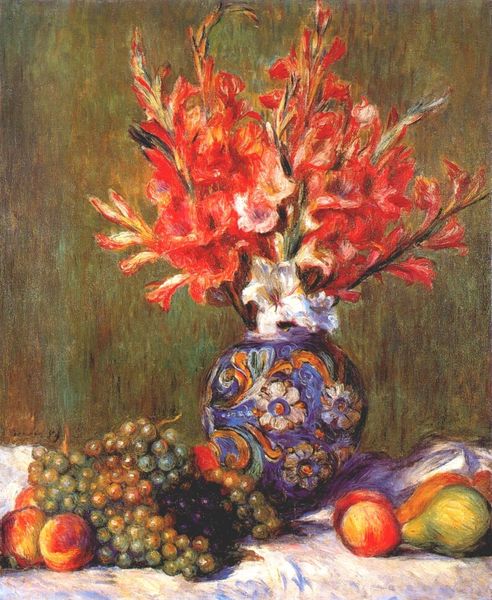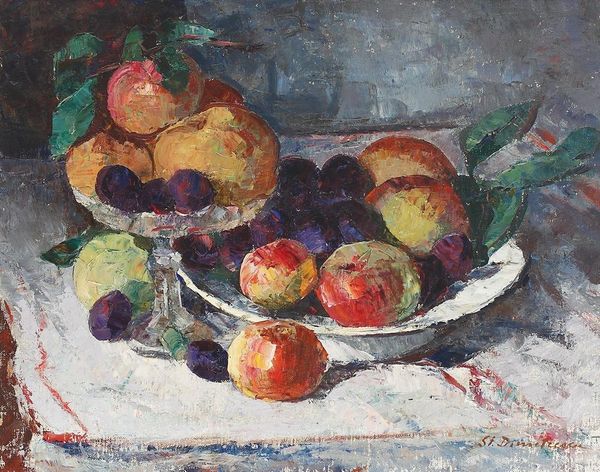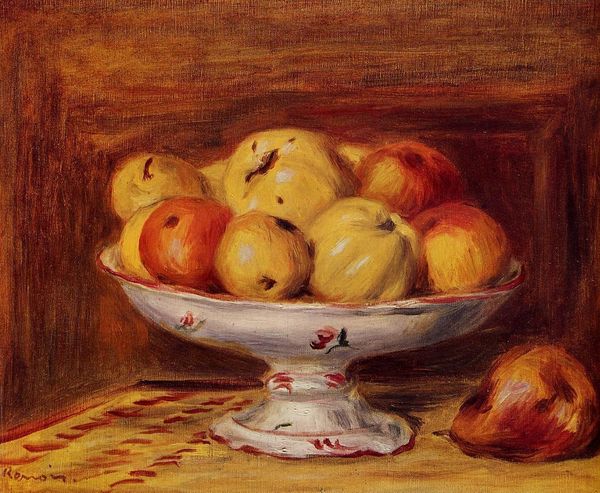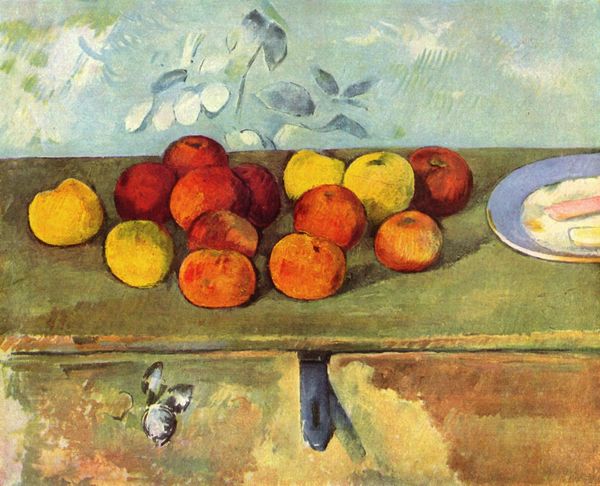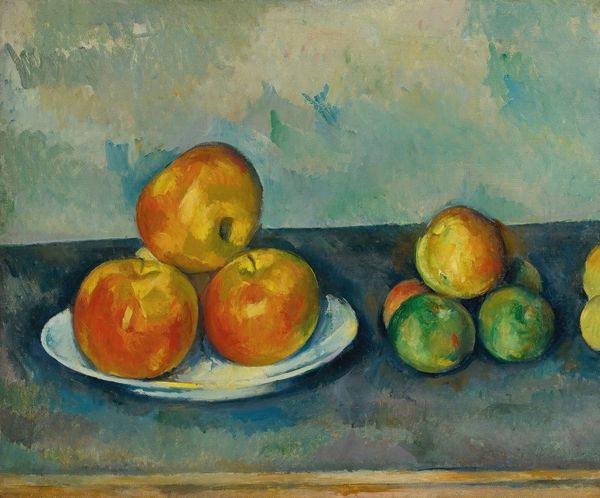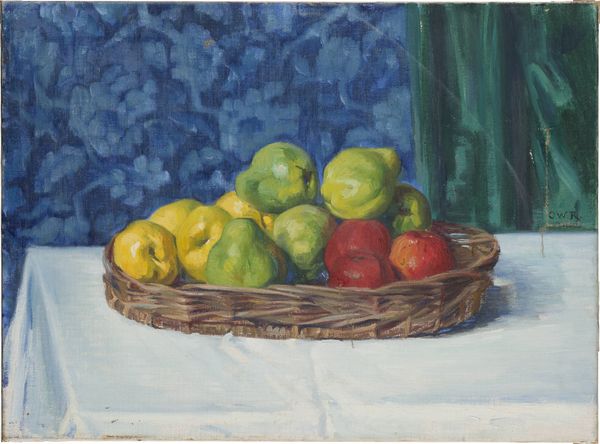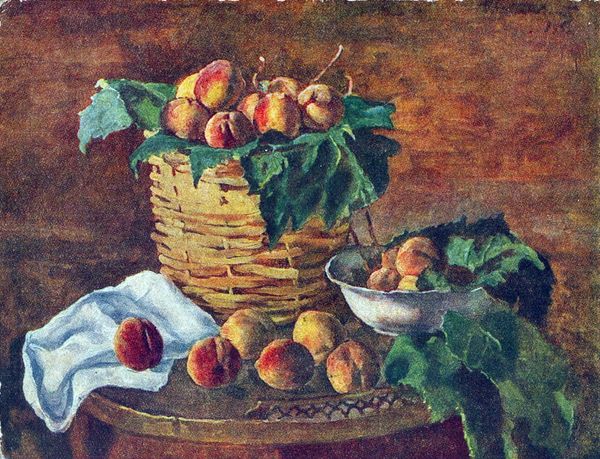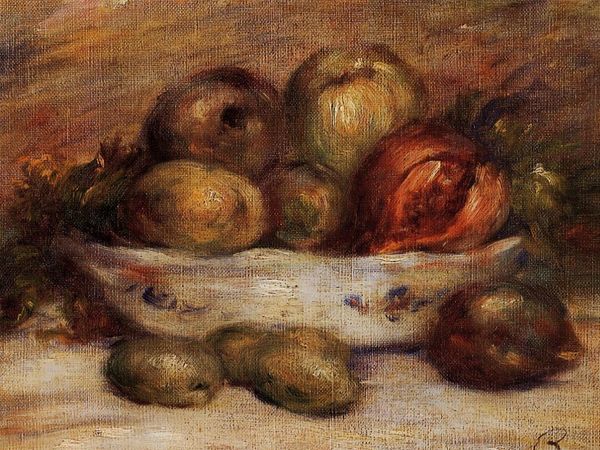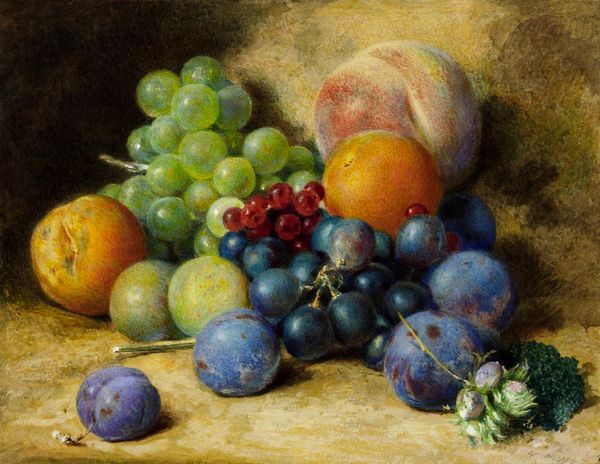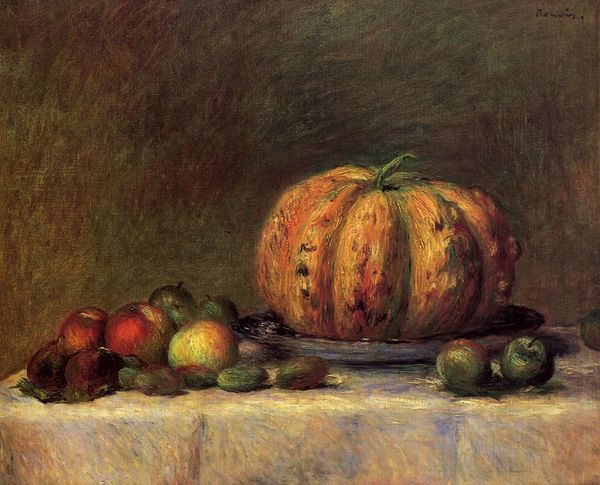
painting, oil-paint
#
still-life
#
food
#
painting
#
impressionism
#
oil-paint
#
oil painting
#
fruit
#
plant
#
post-impressionism
Dimensions: 65 x 53.9 cm
Copyright: Public domain
According to Anglo-Saxon tradition, the beginning of the year marks wassailing season. Wassails were winter rituals hosted in orchards on Twelfth Night, though they now occur between December and February. During wassails, local people gather to bless the orchard and ensure a plentiful apple harvest. The humble apple is the focal point of Pierre-Auguste Renoir’s 1883 oil painting Apples in a Dish. The unblended and intense strokes of colour, which can especially be seen in the white reflections on the surface of the rich porcelain bowl, create a lively energy. The dappled pastel shades of the background suggest a gentle afternoon light, while the warm tones of the red apples and patterned tablecloth are homely and comfortable. This still life embodies French Impressionism with its use of free brushstrokes and the prioritising of colour over line. Developing in the second half of the nineteenth century, impressionism rejected academic traditions of realism and instead aimed to capture the fleeting effects of natural light. Pierre-Auguste Renoir (1841-1919) exhibited alongside Claude Monet (1840-1926), Edgar Degas (1834-1917), and Paul Cezanne (1839-1906) in the movement’s first show in Paris in 1874. Apples in a Dish (1883) transforms an everyday subject matter into a marvellous examination of light and colour. Piled high in their bowl of royal blue, the apples appear ripe and abundant. While the content is derived from the Western still life traditions of the 16th century onwards, Renoir adopts a novel and modern approach to the task of painting fruit. Take a look at a traditional still life painting, such as Jan Davidz de Heem’s Still Life with Ham, Lobster and Fruit (1653). How are the two paintings similar or different? De Heem’s dark and theatrical colour palette contrasts to the vibrant shades of Renoir’s apples, yet both paintings include subtle references to the inevitable passing of time (‘momento mori’). De Heem uses the symbolic images of a dead lobster and half-peeled orange, while Renoir includes a rotting apple in the foreground of his composition. Editor: Lucy Jude Grantham
Comments
No comments
Be the first to comment and join the conversation on the ultimate creative platform.
